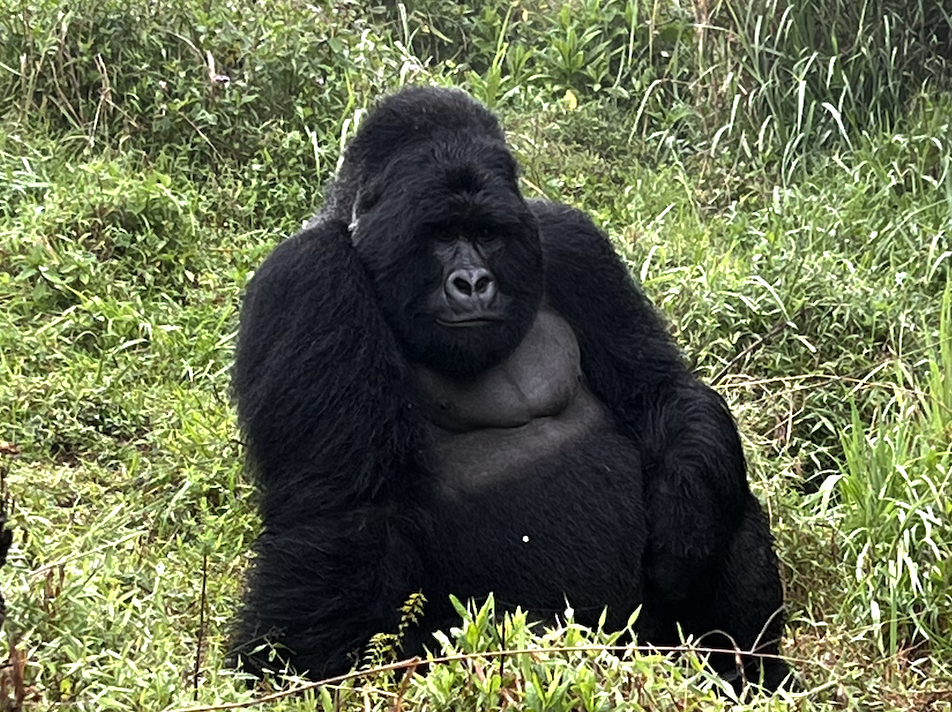Species in Peril:
Mountain Gorilla

Add Text Here
The Critically Endangered Mountain Gorilla
Around a thousand Left!
Mountain gorillas are considered endangered. Their numbers are precariously low at 1063 in 2022. Not only are mountain gorillas threatened by loss of habitat due to human encroachment, they have also become victims of human violence. Currently, the mountain gorilla’s habitat is limited to protected national parks in two regions of Africa. One group of gorillas lives in the Bwindi Impenetrable National Park in Uganda. The other group is spread over three national parks in the Virungas mountain region of the Democratic Republic of Congo, Uganda, and Rwanda.
The life of a baby gorilla
Newborn gorillas weigh about 1.8 kg (4 lb.) at birth. They are as weak and uncoordinated as human babies. For the first four years of their lives, they get around by clinging to their mothers backs. By 3.5 years of age, the young gorillas are fully weaned from their mothers milk and start the same diet as mature mountain gorillas: plants, leaves, roots and shoots.
Mountain gorillas live in groups of up to 30. The group, or troop, is led by a single alpha male, an older silverback. These males are called silverbacks because of the silver stripe they develop on their backs when they mature. The oldest males of the group are at least 12 years old. These troops also include several younger males, adult and juvenile females, and infants.
Female mountain gorillas can produce young beginning at age 10. They carry one or two babies at a time and give birth after a 8.5-month gestation period. In general, they will bear between two and six offspring in a lifetime.
Threats to their Existence
Mountain gorillas are as shy as they are strong. But when threatened, they can be aggressive. They beat their chests and let out angry grunts and roars. Group leaders will charge at the threat. Mothers will fight to the death to protect their young.
In addition to providing protection to group members, silverbacks maintain order and decide all activities within their troop. They schedule feeding trips, resting time, and travel. They also father the majority of the young in the group.
A few more Facts about Mountain Gorillas
- They share 97% of our DNA, only second to chimps
- They are the largest primates on the planet. Males can weigh twice as much as females
- Their life span is around 35 years in the wild
- They build a new sleeping nest every night.
- They are omnivores, eating plants, grubs, fruits and also small insects.
- Their nose prints are like our fingerprints, being unique for every mountain gorilla. That is what scientists use to differentiate each gorilla.
- Mountain gorillas are very intelligent and use over 25 different sounds to communicate.
- They live in only 3 countries in the world: Rwanda, Uganda and the Democratic Republic of Congo.
- They live in small groups of anywhere from 5 to 30 individuals. The silverback leads the group.
- The female has a gestation period of 8.5 months and gives birth to one baby. Twins are rare.
- They are very strong and it would take more than half a dozen football players to keep one down.
Mountain Gorillas are in Danger of Extinction
As civil war rages in Africa, efforts to conserve mountain gorilla populations have been curtailed. Mountain gorillas have been killed or captured by poachers.
Their body parts are also sold to collectors, and baby gorillas are sold illegally as pets, research subjects, or private zoo animals. More must be done to help save these critically endangered great apes.
Species Name
Gorilla beringei beringei
Estimated Population
1,063 globally (c. 2022)
Conservation Status
Endangered
Range
Parts of Rwanda and Uganda
Reasons for Population Decline
Habitat destruction
Poaching
Disease
War and civil unrest


